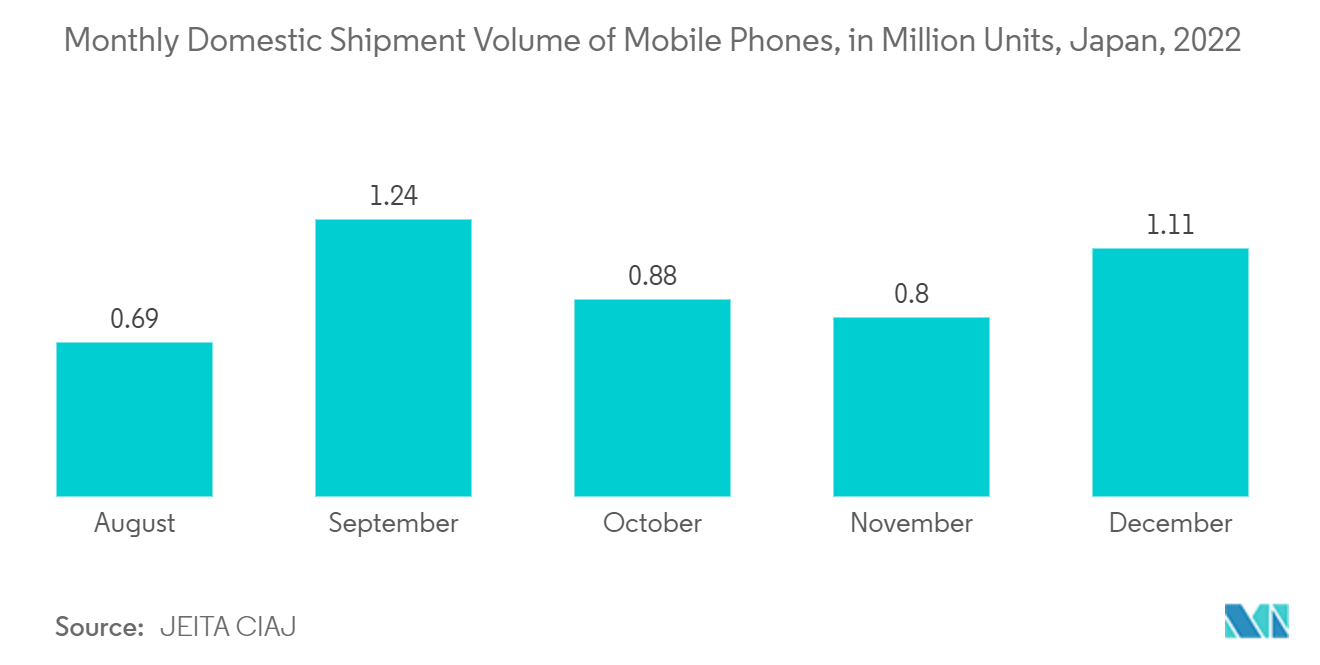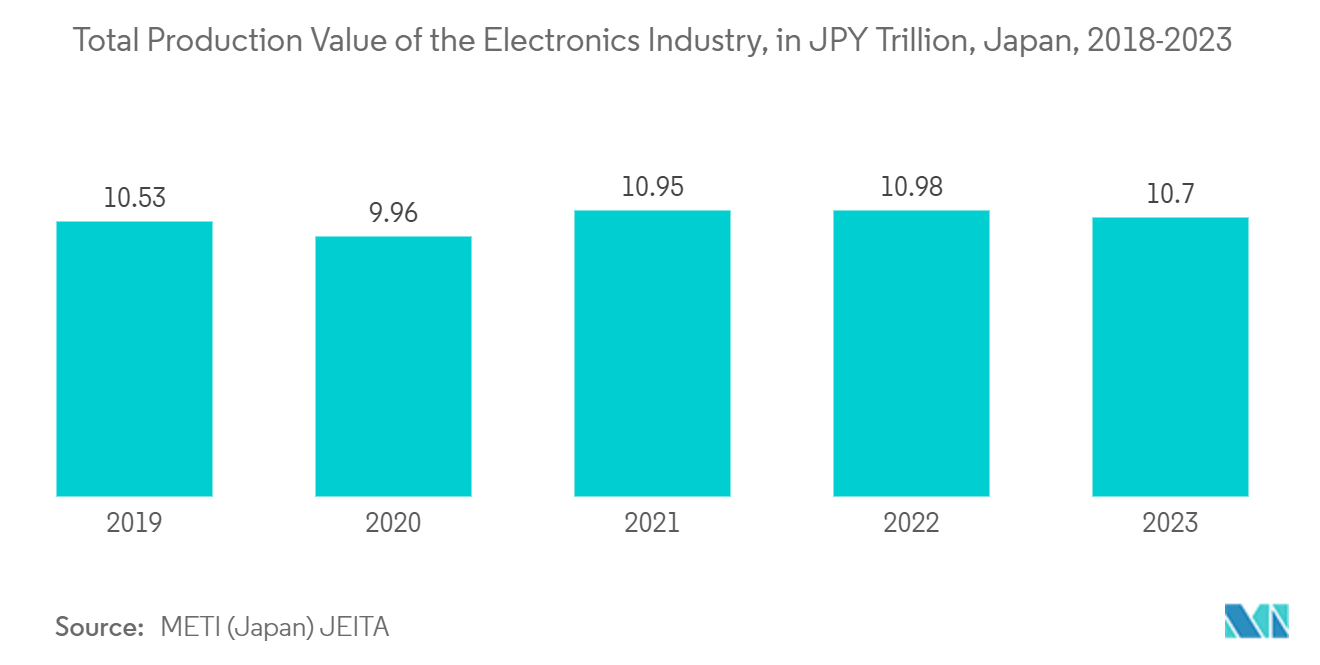Market Trends of Japan Semiconductor Device Industry In Consumer Industry
Increasing Smartphone Penetration
The semiconductor devices in the consumer industry are estimated to continue their robust growth during the forecast period to accommodate the increasing demand for semiconductor materials in smart devices such as smartphones, laptops, Televisions, and many other consumer electronics, coupled with competition among key vendors and consistent spending on R&D.
The increasing proliferation of smartphones, feature phones, and tablets drives the market. Analog ICs are used in various applications, including third and fourth-generation (3G/4G) radio base stations and portable device batteries. RFICs (radio frequency ICs) are analog circuits that usually run in the frequency range of 3 kHz to 2.4 GHz (3,000 hertz to 2.4 billion hertz) circuits that would work at about 1 THz (1 trillion hertz). They are widely used in cell phones and wireless devices. The analog IC market in this segment is expected to grow as they are under development.
Moreover, the rising adoption of 5G smartphones further drives market growth. In April 2022, the Japanese government set a goal for a 5G ecosystem, according to which 99% of the population is anticipated to be serviced by 5G networks by the end of the fiscal year 2030. In addition, according to JEITA, the monthly domestic shipment volumes of mobile phones in Japan amounted to about 1.11 million units in December 2022.
Furthermore, the Japanese brand releases a few Xperia phones yearly. In April 2023, Sony announced the launch of a new Xperia phone in the Japanese market. The upcoming offering is anticipated to be the Sony Xperia 1V. The appliance will arrive as the successor to the last year's Xperia 1IV.
Additionally, in December 2022, Sony Group Corp invested about USD 5.83 billion to build a factory to make smartphone image sensors in western Japan. Such expansion in consumer electronics may further propel the studied market growth.

Microcontrollers (MCU) Holding the Significant Market Growth
The country is a hub for major consumer electronics companies such as Sony, Hitachi, Panasonic, Nikon, and Toshiba. According to Sony, the electronics products & solutions segment of Sony Corporation recently generated a sales result of approximately JPY 2.29 trillion (USD 0.014 trillion). In addition, in April 2022, the company reported a solid 16% increase in group sales compared to the previous year, totaling JPY 11.5 trillion (USD 0.072 trillion).
In addition, according to JEITA, the total production value of the electronics industry in Japan reached close to JPY11 trillion in 2022. The sector encompasses consumer electronic equipment, industrial electronic equipment, and electronic components and devices.
Furthermore, Microcontrollers are used in many home appliances, such as washing machines, air conditioners, vacuum cleaners, refrigerators, front panel keypad control, analog sensor measurements, and LED/LCDs. The industry uses 8-, 16-, and 32-bit microcontroller-based circuitry for motor control and TRIAC/LED/LCD drive applications. The increasing demand for IoT and AI in the country's consumer electronics and home appliances drives the need for microcontrollers.
Further, various companies are looking at constant inventions and upgrades to keep up with countries' microcontrollers' industrial evolution. For instance, Renesas Electronics, a Japanese semiconductor manufacturer, announced a massive investment in manufacturing capacity of more than 50% by 2023. The firm will focus on producing more high-end microcontrollers and other essential elements for electronics. Renesas aims for 40,000 200mm wafers a month by procuring more lines for outsourced production at chip foundries.
Further, Japan has recently announced the creation of a scheme to subsidize the construction of domestic chip factories, with a new plant planned by Taiwan-based TSMC to be the first recipient. The government will likely subsidize up to half of TSMS's estimated JPY one trillion investment for building a chip plant in Kumamoto, Southern Japan.
The rising mobile data traffic demands data speeds to exceed the rates used by analog technology. Thus, demands for improved circuit design are accompanied by calls for advanced components. This is expected to ultimately give rise to the use of advanced discrete semiconductors in the country. According to official data, internet users in Japan has a median mobile internet connection speed via cellular networks is 40.89 Mbps. The median fixed internet connection speed is 93.26 Mbps. in 2022.
Companies in the market are developing new products to provide their customers with various solutions. For instance, in June 2022, NXP Semiconductor announced a new MCX portfolio of microcontrollers designed to advance innovation in smart homes, smart factories, smart cities, and many emerging industrial and IoT edge applications. Such consumer electronics and semiconductor development developments may further propel the country's demand in the studied market.


